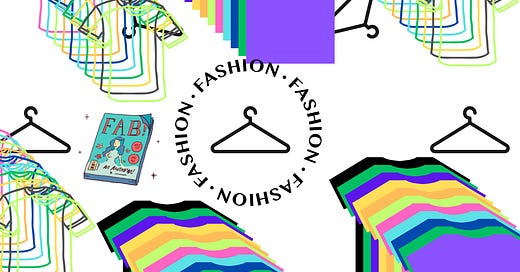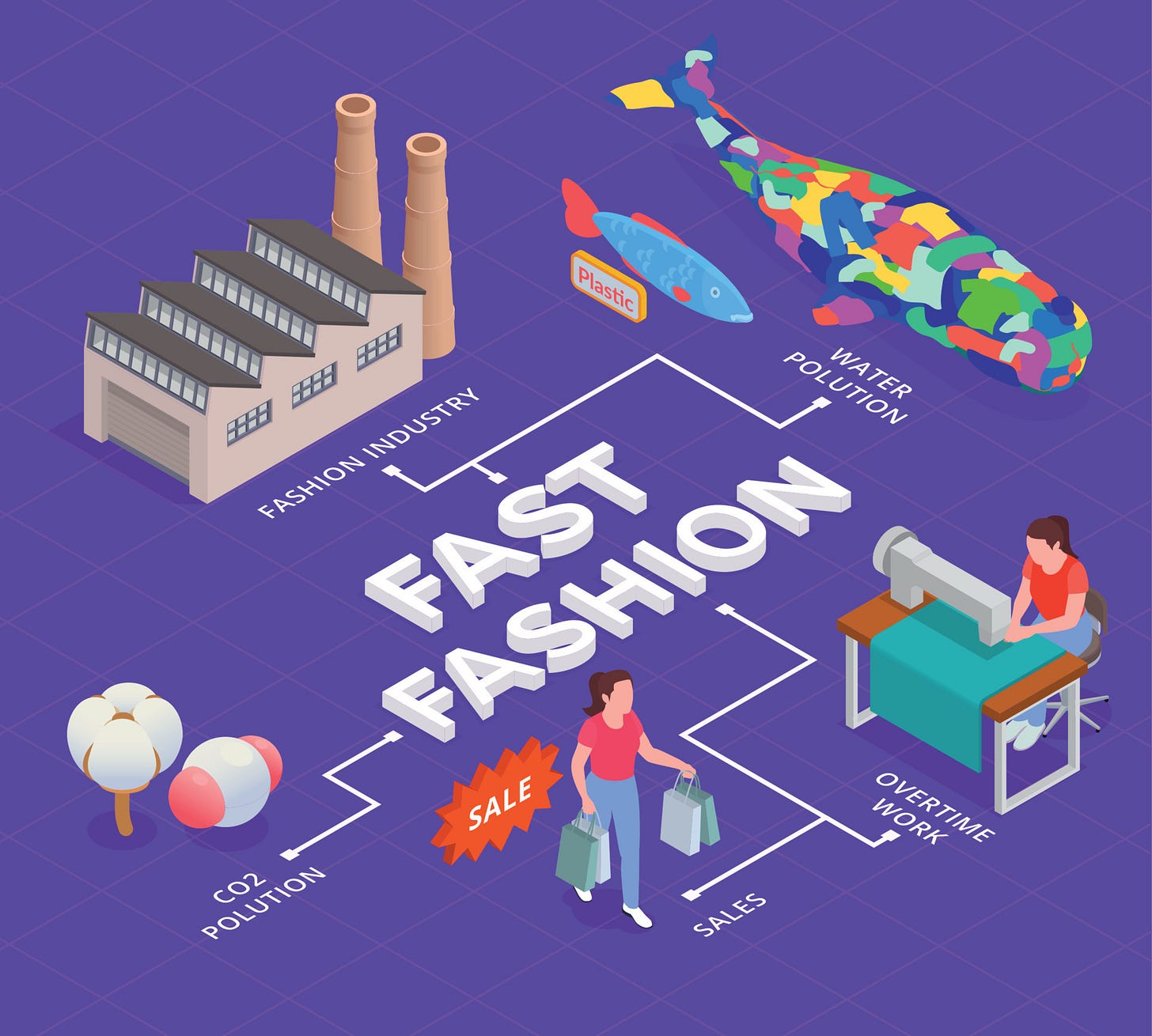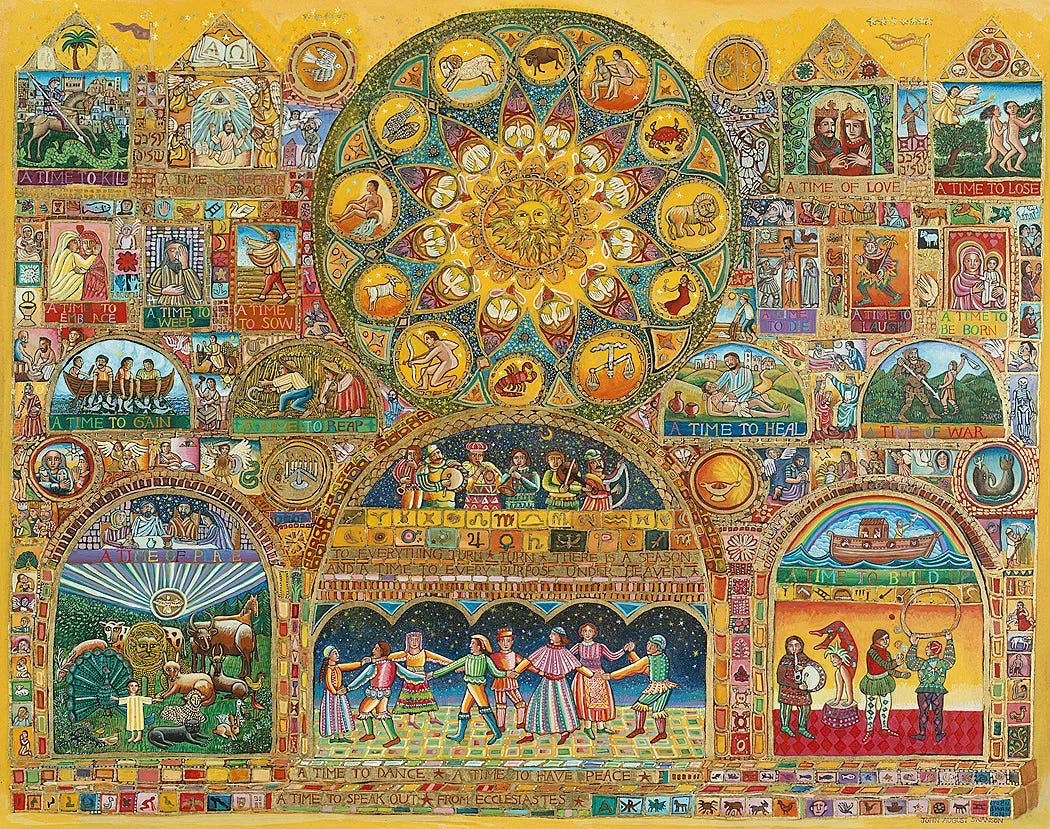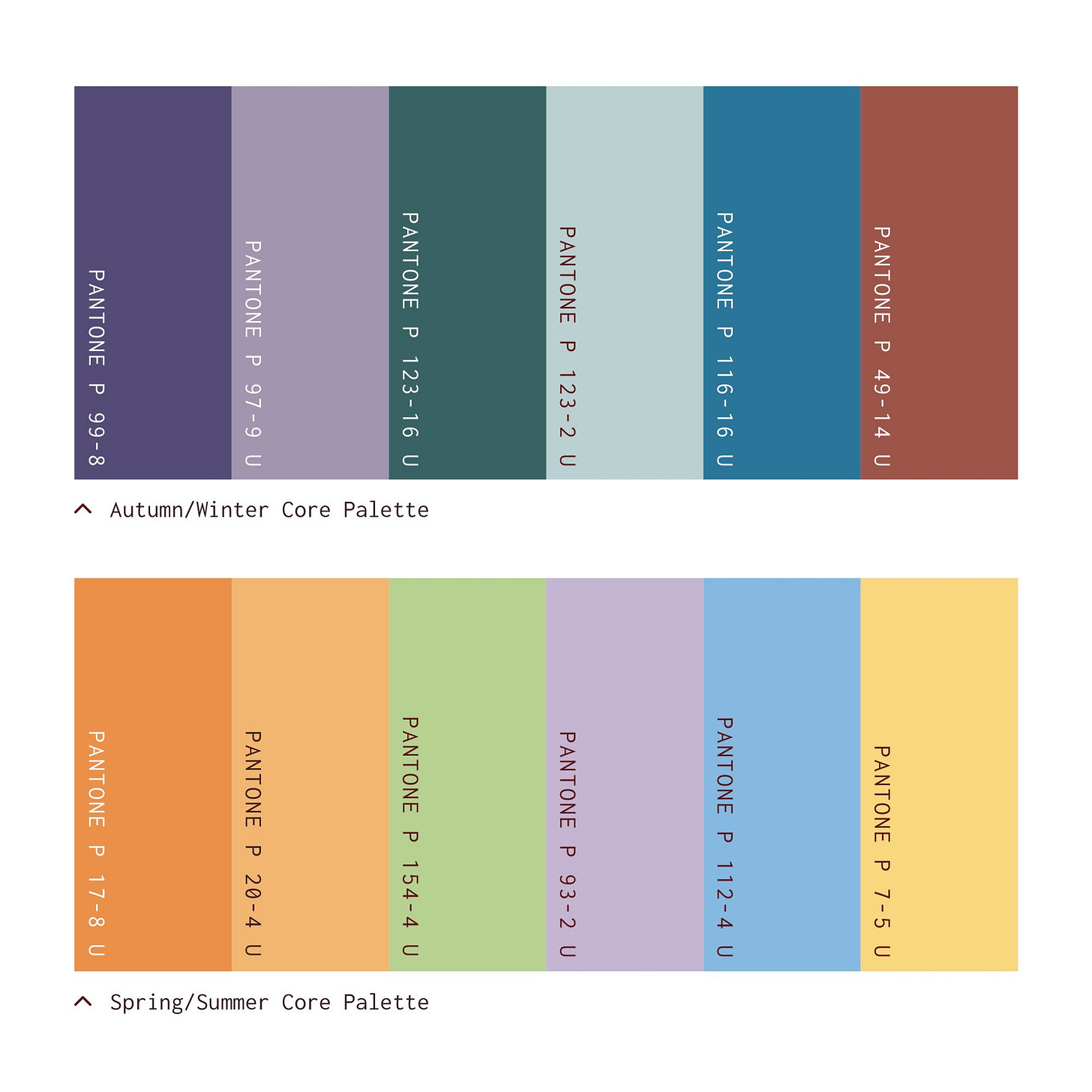I Dress, Therefore I Am
Fast Fashion & Hevel, the Tyranny of the Unnecessary, and Why Narrowing Your Identity Narrows Your Wardrobe
1. Archetype Hunting
When I was younger I had a bit of an identity crisis. Most young people do. It’s packaged with an unformed frontal lobe.
I was still figuring out what archetype I wanted to personify. I knew I wasn’t the sporty guy, the computer nerd, the musical savant. I didn’t really have a “thing,” and it drove a lot of insecurity.
At the height of this insecurity, I found myself searching for new clothes daily. I wasn’t self-aware enough to realize it at the time, but I was using a steady stream of new outfits to appease my void of identity.
Which isn’t all that uncommon. The writer Harma-Mae Smit notes that we often use outfits to reinforce the genre of our persona (i.e., the athlete, the hipster, the writer, the hippie, etc.) or tribe (the frat bros, the boho-chics, the city-dwelling liberals).1
The only problem: I was young and without access to generational wealth.
So I bent my ethics and bought cheap clothes from websites like Shein. For those who don’t know, sites like Shein sell ridiculously cheap clothing – but it’s made so affordable because they use poor materials and cheap labor.
If you’re unfamiliar, check out this SNL spoof. It’s dark, but its humor unveils the industry’s sad reality.
It’s not just Shein or Zaful either. The exact stats are a bit blurry, but the current estimates are that anywhere from 60-90% of clothes are produced by laborers paid horribly unfair wages. Of that percentage, around 10-30% is produced by slave labor – including child slave labor.2
A year later, the clothes I bought were falling apart. So when I actually got a job that paid real moolah (to use the technical term), I decided to just go quality over quantity — getting well-made clothes from trustworthy sources.
And the older I’ve gotten, the less anxiety I’ve given toward clothing. It’s not just thanks to getting older – though aging really does help in this area.3 It’s also thanks to identifying the futility – or hevel, to borrow Ecclesiastes’ term – behind constant consumption.
On top of that, I also became a little more certain of who God called me to be. That sense of security helped chisel down a corresponding wardrobe.
Which isn’t to say that all interest in fashion arises out of insecurity. But the more I researched fast fashion specifically, the more I noticed the way it caters toward consumers on a continuous hunt for who they are.
2. Statistics, Shushmistics
“Clothes make the man. Naked people have little or no influence on society.” – Mark Twain
Fast fashion is streamlined and simple — only requiring a matter of seconds to go from an Instagram ad to confirming your shipment.
Its products are endless. The fashion turnover rate used to just be seasonal (summer, fall, winter, spring). Now, fast fashion sites release new products daily – with Shein specifically drawing up around 10,000 new designs per day. And apparently it’s worked out for them: the industry generates anywhere between 100 to 200 billion dollars annually.4
Despite growing awareness about the ethics of fast fashion, their profits keep rising. There are lots of reasons behind this, but two big ones:
Even though many realize these products are unethical, they struggle to resist their prices.
Some shoppers admit that even though they know it’s unethical, they’d rather not cut back simply because they enjoy the ritual of shopping too much.5
Take the voyeuristic thrill of the “haul” — which is perhaps the social media trend that’s most made me want to jump off a bridge. It’s almost like a modern expression of the primal hunter/gatherer instinct to parade one’s daily score, winning admiration (or envy) from the tribe.
People like to showcase identity through fashion – both to others and to ourselves.6
Like Virginia Woolf wrote, clothes “change our view of the world and the world’s view of us.”7
Studies across 20 distinct cultures found that clothes are often used as a way to show originality, uniqueness, and (essentially) coolness.8 Which is in line with something Miuccia Prada said: “What you wear is how you present yourself to the world, especially today, when human contacts are so quick. Fashion is instant language.”9
Fast fashion’s commitment to variety through daily drops meets this craving perfectly – continually offering new and affordable ways to reinvent oneself. And this is, sadly, why sustainable clothing comes across less appealing. By its very nature, it can’t keep up with frenetic trend cycles. So on top of it already being pricey, it also lacks the variety of fast fashion.
This might also explain why sustainable clothing has less appeal with younger crowds. Among Gen Z specifically, Shein is the second most popular shopping website just behind Amazon. A meta-analysis of fast fashion studies found that companies specifically target their marketing toward Millennials and Gen Z.10
Maybe this is just because the young spend more time online. But maybe it’s also because they’re the demographic who’s least likely to have their identities worked out. This uncertainty could make them more susceptible to oscillating through cheap clothes.
However (and sadly), despite how many clothes we buy, we rarely use them.
A study by the Hot or Cool Institute, a Berlin-based think tank, found that the average North American buys 81 pounds of clothing each year. Another study found that each American has an average of 107 items of clothing, but they only wear around 10% of them on a regular basis. On average, they consider 21% of these clothing items as “unwearable,” 57% as too loose or too tight to wear comfortably, and they’ve never worn the remaining 12%.11
The average piece of clothing is only worn 7-10 times before being discarded.12 In
’s “No, you don’t need that new top” article, she notes that over 80 billion articles of clothing are acquired each year, but about 85% ends up in a landfill by the next year.Several African countries have even requested that the U.S. stop sending clothes donations because the surplus garment piles are damaging crucial city infrastructure. You can even see one of these “clothes graveyards” from space.
I imagine these graveyards are helped along by the rapid buy and discard rates incentivized via social media. Tik Tok specifically generates limitless outfit inspo, inspiring anxiety to hop on new trends before even the recent ones have settled.
Fast fashion allows low-income households to keep up with the insane pace of these trends — which is why some have referred to it as a “democratization” of fashion. But the democratization for one demographic is only made possible through the exploitation of another. Not only does the industry come with horrendous environmental costs, but it undervalues the imago Dei within each of its underpaid and overworked employees.
However, convincing people fast fashion is unethical isn’t the hard part; the hard part is rejecting it. The way it allows us to click “buy” over and over again without breaking the bank makes it the ideal outlet for a consumer culture.
3. The Tyranny of the Unnecessary
“What really characterizes consumer culture is not attachment to things but detachment. People do not cling to things; they discard them and buy other things.” – William Cavanaugh
Addressing the way the consumer motive still infects those who think they’re free from it, poet and activist Wendell Berry wrote:
But even in the much-publicized rebellion of the young against the materialism of the affluent society, the consumer mentality is too often still intact: the standards of behavior are still those of kind and quantity, the security sought is still the security of numbers, and the chief motive is still the consumer's anxiety that he is missing out on what is “in.”13
Despite our professed beliefs against accumulation, an even deeper impulse motivates our spending.
This deeper impulse is what advertisers cultivate. Take this page from the advertising pioneer Paul Mazur’s manifesto:
We must shift America from a needs to a desires culture. People must be trained to desire, to want new things, even before the old have been entirely consumed. We must shape a new mentality. Man’s desires must overshadow his needs.14
In general, advertising psychology aims to create “desire for desire.”15 The philosopher Herbert Marcuse called this “the creation of false needs.”16 All it requires is luring people into forgetting their true needs by inventing “pseudo-needs.”
It plants the idea that your present unhappiness is due to lacking their products. It’s why ads almost always use images of good-looking people looking happy (i.e., the person you are now isn’t working; but if you buy this product, you can become this person).
But it can’t deliver on its promises. Even more sadly, it doesn’t want to deliver on its promises. It’d much rather push you into a scarcity mindset that causes you to spend more and hoard more.17 The longer you stay on the “hedonic treadmill” of trying on new identities, the longer they’ll have you on the hook.
Research shows that consumers have the highest “rush” or dopamine blast in the process of viewing or selecting a product to purchase. But after making the purchase, there's a wave of regret and emptiness, which restarts the feeling of discontent that drove them to the product in the first place.18
Which just goes to show that purchasing things never scratches the itch we’re really trying to reach. This self-repeating cycle is what I call the “tyranny of the unnecessary.” And fast fashion might just be its poster child.
4. The Hevel of Fast Fashion
In theologian Robert Covolo’s Fashion Theology, he points out that even though there’s no real theological need to shun new styles, modern trend cycles are so accelerated that they drain any lasting enjoyment from the clothes we buy.19
Framed this way, fast fashion becomes especially “futile, for the trend of the moment will always be swiftly replaced by another. It echoes our culture at large: a ceaseless search for nothing in particular.”20
The lack of value in these clothes also can’t help but transfer itself onto the wearer – even if it’s just subconscious. As Harma Mae-Smit notes, “Rather than showing respect for the wearer, fast fashion transfers this sense of futility onto the person who wears it.”21 It promises to craft an improved version of ourselves, but really just trivializes our own value.
The clothes have no personal touch. Throwing away an outfit made for us personally by someone we love and respect would be genuinely hard; throwing away a Shein top isn’t. There’s no meaning or history or larger purpose. They’re like loveless non-objects.
This is why they bring to mind Ecclesiastes’ idea of “vanity.” In Hebrew, “vanity” is hevel, which means “vapor” or “smoke.” But loads of scholars translate it as “futility,” “merest breath,” or my personal favorite, “mirage.” The idea hevel evokes is that time and energy are always slipping away, disintegrating like mist – that generations come and go faster than most trees sprout and die, that our toil and concerns and pleasures only provide an illusion of purpose.
As Qoheleth, Ecclesiastes’ mysterious author, writes,
5:10 Whoever loves money never has enough;
whoever loves wealth is never satisfied with their income.
This too is hevel.5:11 As goods increase,
so do those who consume them.
And what benefit are they to the owners
except to feast their eyes on them?
A tad depressing, but accurate. If we believe accumulation is the compass to satisfaction, we’ll never reach it. We smack into its false promises everytime we feel suspicion that a purchase might be unnecessary and yet buy anyway.
As Old Testament scholar Knut Martin Heim comments,
The promise of happiness through the acquisition of luxuries is forever misleading. The visualization of such fulfillment through unlimited consumption is an optical illusion of the mind, similar to the many advertisements which bombard human senses today.22
Now if a BC aristocrat noticed the hevel within the possessions available in an ancient agrarian society, imagine how he’d feel about modern fashion.
Fast fashion is like hevel on steroids. It’s to clothes what snuff films are to the movie industry. Through it we try to craft more refined identities, but its frenetic pace, lack of value, and exploitation leaves us hollower than ever.
I’m not aiming to critique fashion itself. Think about the ways the Bible describes clothing in positive ways. Jesus’ robe was seamless and apparently costly (John 19:33-34). The Proverbs 31 women is “clothed in fine linen and purple” (v. 22). In one of Ezekiel’s visions, God clothes Jerusalem with nice garments, jewelry, and fine sandals (16:10-13).
Well-made clothes accentuate the beauty of our reality. As long as they’re not acquired to show off or invoke envy, they contribute more beauty to our world and us. In Smit’s summary, “If our enjoyment of fashion ends only in ourselves, in vanity or self-centeredness, it does not really reveal who we are as image bearers of God.”23
But fast fashion is an entirely different story. Yes it’s unethical and contributes to selfish consumerism; but we should also critique it for simply having no beauty. Not only does it lack beauty, it drains beauty through its exploitation of God’s creatures and creation. It’s anti-beauty.
To circle back around to the beginning, our clothing choices – and consumer habits – reflect who we are. They’re a non-verbal communication of our inner life. If we’re unfulfilled or uncertain of what actually makes us happy, our spending habits might look a bit frantic.
So one surefire way to tame our fashion consumption is to come into a more confident understanding of who God’s called us to be.
For me personally, I had to continually practice knowing and being known by God. When I woke up, I would write down that I was His child with whom He was well-pleased. I’d visualize His face shining on me. And I just practiced this state of basic awareness as often as I could remember to.
Clothes spending wasn’t the main inspiration behind this; I did it because I was insecure, sad, and a bit lost. But this one stone inevitably knocked out multiple birds. Aiming toward heaven brought about more wholeness in life on earth: a narrowing of daily wardrobe anxieties; a clearer composite sketch of who I was growing into; a lessening of my desire to fill the God-shaped hole in me with things that aren’t God.
Thanks for reading! Check out part one and two if you missed it! Also, an enormous shoutout to
for peer-reviewing this essay. His work in this area helped me out immeasurably. If you haven’t, please check out his publication .I am so thankful for Harma-Mae Smit’s work in fast fashion theology. There was so little to go off of, and her two articles on the subject were phenomenal. See “Christians and Fast Fashion Pt. 1: More Than Ethics,” AD Fontes Journal, November 1, 2021, https://adfontesjournal.com/web-exclusives/christians-and-fast-fashion-pt-1-more-than-ethics/#post-24475-footnote-0
The psychologist David Yeager notes that status cravings start to decline after the age of twenty-five. See his wonderful book 10 to 25.
Olivar Aponte, Nadia, Jesús Hernández Gómez, Vianey Torres Argüelles, and Eric D. Smith. 2024. “Fast Fashion Consumption and Its Environmental Impact: A Literature Review.” Sustainability: Science, Practice and Policy 20 (1).
Lang, C., and C. Armstrong. 2018. “Collaborative Consumption: The Influence of Fashion Leadership, Need for Uniqueness, and Materialism on Female Consumers’ Adoption of Clothing Renting and Swapping.” Sustainable Production and Consumption13: 37–47; Muruganantham, G., and R. Bhakat. 2013. “A Review of Impulse Buying Behavior.” International Journal of Marketing Studies 5 (3): 149–160. (It’s one of those weeks where I’m not gonna fight APA).
Malcolm Barnard, Fashion as Communication (New York: Routledge, 2002), 88.
Virginia Woolf, Orlando: A Biography (New York: Harcourt, 1928).
[xv] Olivar Aponte, Nadia, Jesús Hernández Gómez, Vianey Torres Argüelles, and Eric D. Smith. 2024. “Fast Fashion Consumption and Its Environmental Impact: A Literature Review.” Sustainability: Science, Practice and Policy 20 (1). doi:10.1080/15487733.2024.2381871.
[xvi] Bick R, Halsey E, Ekenga CC. The global environmental injustice of fast fashion. Environmental Health 72 no. 1 (2018): 92.
Giovannini, S., Y. Xu, and J. Thomas. 2015. “Luxury Fashion Consumption and Generation Y Consumers.” Journal of Fashion Marketing and Management 19 (1): 22–40; Lertwannawit, A., and R. Mandhachitara. 2012. “Interpersonal Effects on Fashion Consciousness and Status Consumption Moderated by Materialism in Metropolitan Men.” Journal of Business Research 65 (10): 1408–1416; Soh, C., S. Rezaei, and M. Gu. 2017. “A Structural Model of the Antecedents and Consequences of Generation Y Luxury Fashion Goods Purchase Decisions.” Young Consumers 18 (2): 180–204.
There’s not much proof that she actually said this, but it certainly seem Prada-esque.
Olivar Aponte, Nadia, Jesús Hernández Gómez, Vianey Torres Argüelles, and Eric D. Smith. 2024. “Fast Fashion Consumption and Its Environmental Impact: A Literature Review.” Sustainability: Science, Practice and Policy 20 (1). doi:10.1080/15487733.2024.2381871.
This stat appears in Michael Easter, Scarcity Brain: Fix Your Craving Mindset and Rewire Your Habits to Thrive with Enough (New York: Random House, 2023), 181.
Ellen MacArthur Foundation. "Fashion and the Circular Economy." Accessed February 14, 2025. https://www.ellenmacarthurfoundation.org/fashion-and-the-circular-economy-deep-dive.
If you were curious about the Cavanaugh quote: William T. Cavanaugh, Being Consumed: Economics and Christian Desire (Grand Rapids, MI: Eerdmans, 2008), 34. But here’s the Berry citation: Wendell Berry, The Art of the Commonplace: The Agrarian Essays of Wendell Berry (Berkeley, CA: Counterpoint, 2002), 85.
Quoted in Jeremy Lent, The Patterning Instinct: A Cultural History of Humanity's Search for Meaning (Amherst, NY: Prometheus, 2017).
Rodney Clapp, “The Theology of Consumption and the Consumption of Theology,” in Rodney Clapp, ed(s). Border Crossings: Christian Trespasses on Popular Culture and Public Affairs, (Grand Rapids, MI: Brazos, 2000), 126-156.
Herbert Marcuse, One-Dimensional Man: Studies in the Ideology of Advanced Industrial Society (New York: Routledge Classics, 2002).
Daniel Mochon, Michael Norton, & Dan Ariely, “Getting off the Hedonic Treadmill, One Step at a Time: The Impact of Regular Religious Practice and Exercise on Well-Being,” Journal of Economic Psychology 29, no. 5 (November 2008): 632–642; Easter, Scarcity Brain, 161-201.
This stat pops up in Johann Hari’s Lost Connections. See also Kristina Bäckström, “Shopping as Leisure: An Exploration of Manifoldness and Dynamics in Consumers Shopping Experiences,” Journal of Retailing and Consumer Services 18 no. 3 (2011): 200-209.
Robert Covolo, Fashion Theology (Waco, TX: Baylor University Press, 2020), 94-95.
Harma-Mae Smit, “Christians and Fast Fashion Pt. 1.”
Harma-Mae Smit, “Christians and Fast Fashion Pt. 1.”
Knut Martin Heim, Ecclesiastes: An Introduction and Commentary: Commentary. (Downer’s Grove, IL: IVP Academic, 2019), 62.
Harma Mae-Smit, “Christians and Fast Fashion Part 2,” Ad Fontes Journal, November 3 2021, https://adfontesjournal.com/web-exclusives/christians-and-fast-fashion-pt-2-pursuing-virtue-through-dress/#post-24484. See also Barnard, Fashion as Communication, 86-89.













Very interesting. It might be worthwhile to point out that this is why Old Order Anabaptists dress like they do: it's a traditional style, unchanged for centuries, and thus untouched by the modern contrivance of trendiness and novelty. It's homemade, meaning a family has a personal relationship with the clothing, they put their own sweat and tears into it. And its simple, promoting modesty and humility in one's presentation of themselves. I think there's a lot to learn from this.
Brilliant, brilliant piece Griffin. I am so glad to see this in the "wild" - and I am glad my thoughts were helpful.
This really is a critically important piece you have written, both from a theological perspective (consumerism is such a neglected topic for evangelicals) and from my agrarian perspective for fast fashion has severe implications for ecological unsustainability, worker exploitation, false conceptions of the good life, and "landscape-scale-visible-from-outer-space-level pollution".
Thank you for writing it.